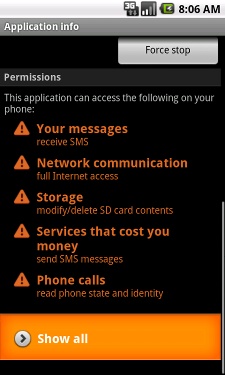Trojan:Android/Cawitt.A
Summary
Cawitt.A operates silently in the background, gathering device information which it later forwards to a remote server.
Removal
Once the scan is complete, the F-Secure security product will ask if you want to uninstall the file, move it to the quarantine or keep it installed on your device.
A False Positive is when a file is incorrectly detected as harmful, usually because its code or behavior resembles known harmful programs. A False Positive will usually be fixed in a subsequent database update without any action needed on your part. If you wish, you may also:
-
Check for the latest database updates
First check if your F-Secure security program is using the latest updates, then try scanning the file again.
-
Submit a sample
After checking, if you still believe the file is incorrectly detected, you can submit a sample of it for re-analysis.
Note: If the file was moved to quarantine, you need to collect the file from quarantine before you can submit it.
-
Exclude a file from further scanning
If you are certain that the file is safe and want to continue using it, you can exclude it from further scanning by the F-Secure security product.
Note: You need administrative rights to change the settings.
Technical Details
Once installed, Cawitt.A will not place a launcher icon in the application menu to prevent it from being noticed by the device owner. Its presence however, can be revealed with a quick look under 'Manage applications' in Settings.


Cawitt.A as listed on the device, and the permissions it requested.
Cawitt.A operates silently in the background, gathering device information which it later forwards to a remote server. Collected information include:
- Device ID
- International Mobile Equipment Identity (IMEI) number
- Phone number
- Bot ID
- Modules
It also sends out premium-rate SMS messages from the device upon receiving command from the remote server.